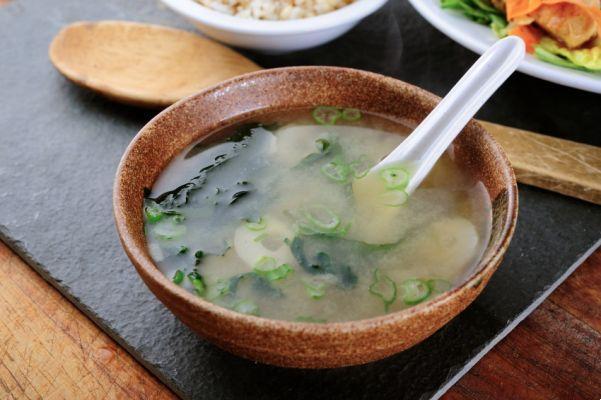
Produced in the Okazaki city for five hundred years, the Hatcho ("hatcho" refers to the fact that the manufacturing company was eight blocks from Okazaki Castle) Miso is truly one of the culinary treasures of Japan.
- What is hatcho miso?
- Nutritional values
- Property
- How to use it
What is Hacho Miso?
The Hacho Miso is a condiment traditionally made from 100% soybeans (no grains such as rice and wheat are added). It comes with a darker brown, more reddish than miso made with just rice.
As for the taste, the key to miso's distinctive sweet and spicy richness lies in the microorganisms it generates through the fermentation process.
Over the course of two years, these Special enzymes are able to slowly sweeten the soy bean mixture, transforming the complex proteins, carbohydrates and fats of beans into dark, rich and flavorful fatty acids and amino acids.
Nutritional values of Hacho Miso
Miso contains a good amount of vitamins, minerals and plant compounds benefits.
28 g of this product provides:
- Kcal: 56
- Carbohydrates: 7 g
- Fats: 2 g
- Proteins: 3 g
- Sodium: 43% of the RDI
- Manganese: 12% of the RDI
- Vitamin K: 10% of the RDI
- Copper: 6% of the RDI
- Zinc: 5% of the RDI
Ownership of Hacho Miso
It contains small amounts of B vitamins, football, iron, magnesium, selenium e phosphorus and is a source of choline.
Furthermore, the fermentation process used to make miso facilitates the body's absorption of the nutrients it contains.
The fermentation process also promotes the growth of probiotics, beneficial bacteria that provide a wide range of health benefits including, A. oryzae, the leading probiotic strain found in miso.
It must also be said that the miso is also very salty therefore it should be taken with extreme moderation and with caution, especially if you are being treated with antihypertensive drugs.
How to use it
Miso is extremely versatile and can be used in a variety of ways. For example, you can use it to flavor a broth or combine it with ingredients such as peanut butter, tofu, lemon or apple juice to make sauces or creams.
Se combined with oil and vinegar, makes a simple and tasty salad dressing. Miso can be best used in cold rather than hot dishes, as its probiotics can be inactivated by high temperatures.
When buying miso, it is best to opt for the unpasteurized product, alive and rich in enzymes that will have to be kept in the refrigerator.
After opening, the texture, color and flavor can change, so it's best to be careful.


























